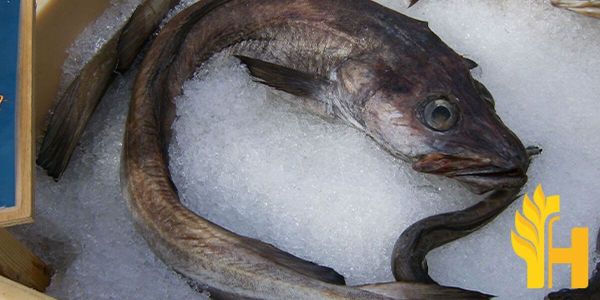Blue Ling price

Where to buy and sell Blue Ling, lowest (cheapest) and highest price.
check offers buy sell Blue LingToday price for Blue LingBlue Ling wholesale prices 2022
The Current commodity price of Blue Ling per kg, pound in the world in the global markets
Blue Ling fish - Molva dypterygia
Silver Ling or blue ling is also known under the scientific name Gadus dypterygius. It is a fish native to the Southwestern Barents Sea and north Spitsbergen. It also occurs west to Greenland and Newfoundland as well as in the region of the souther coast of Iceland. It can also be found in the waters of the British Isles and south to Morocco and in the Mediterranean region.It is characterized by its low bottom jaw that is placed significantly lower than the upper one. Its barbel is shorter than the eye. The dorsal fin of the fish has from 69 to 83 rays. Its anal fin has got up to 81 rays. What is quite interesting about the fish, is the fact that its pelvic fin reaches beyond the end of the pectoral fin. Silver ling usually occurs in grey to brown color dorsally and shades ventrally to bright or even white shade. Its posterior region with vertical fish is slightly darker and marked with pale margins.
Silver ling occurs naturally in waters no deeper than 1000 meters, mostly from 350 to 500 m. It leavers near muddy bottoms. The males reach up to 75 cm and become fully mature at 9 years. The females are slightly bigger and can reach up to 88 cm, they become fully mature at 11 years. The fish spawns from April to May. The fish grows up to 20 years. The largest specimens may reach up to 155 cm in length. Silver ling feeds on other fish (gobies, rocklings, flatfishes) as well as crustaceans.
It is an important commercial fish, fished quite regualrly with the use of bottom trawls and longlines. The fish is an important crop in the north-eastern Atlantic. Accoridng to statistics provided by the Yearbook Fishery Statistic, up to 27365 metric tons of silver ling is fished each year. The fish is usually avaialble frozen as a whole, as fresh fillets or reduced to fish meat and fish prodcuts. The fish is also an important species for industrial and artisanal fisheris in the Mediterranean region.
The blue ling fish is a type of codfish that is found in the waters off the coast of Norway. The fish has a blue tint to its skin and is considered to be a delicacy in many parts of the world. The blue ling fish is often served with potatoes and vegetables. The blue ling fish is a type of codfish that is found in the waters off the coast of Norway. The fish has a blue tint to its skin and is considered to be a delicacy in many parts of the world. The blue ling fish is often served with potatoes and vegetables. The blue ling fish is a type of codfish that is found in the waters off the coast of Norway. The fish has a blue tint to its skin and is considered to be a delicacy in many parts of the world. The blue ling fish is often served with potatoes and vegetables.
Global blue ling production
Blue ling is a large, deep-sea fish that can be found in the Atlantic, Pacific, and Indian Oceans. It is an important commercial fish and is often caught for food. In recent years, the blue ling population has declined due to overfishing and climate change. However, there is still a demand for this delicious fish, so it is important to know where it is being caught and how much is being produced. In 2018, the total global production of blue ling was 990,856 tonnes. The top five producers of blue ling were China, Indonesia, the United States, Japan, and Canada. Together, these countries accounted for over 60% of the world's blue ling production. China is by far the largest producer of blue ling, with a total production of 628,767 tonnes in 2018. This is nearly double the amount of blue ling produced by the second-largest producer, Indonesia. The United States is the third-largest producer of blue ling, with a production of 102,943 tonnes. Blue ling is a popular fish in many parts of the world, and its popularity is only increasing. As the demand for this delicious fish grows, it is important to know where it is being caught and how much is being produced. With this information, we can ensure that the blue ling population remains healthy and sustainable.Download our new
Husfarm App
Stay up to date with the current prieces of agricultural products all over the world.
Do you want to sell agricultural products?
Are you an Agricultural processor looking for high-quality products to buy?
Post an ad for FREE!
